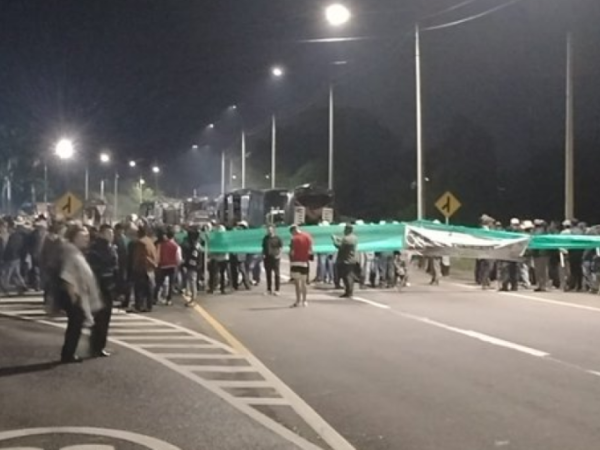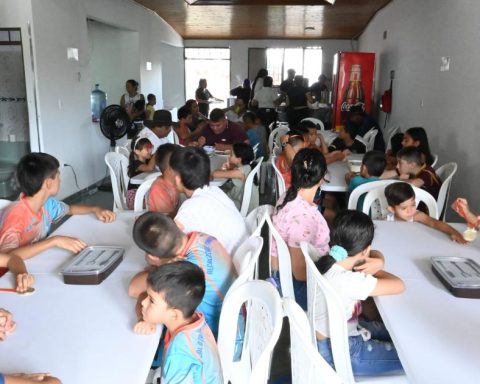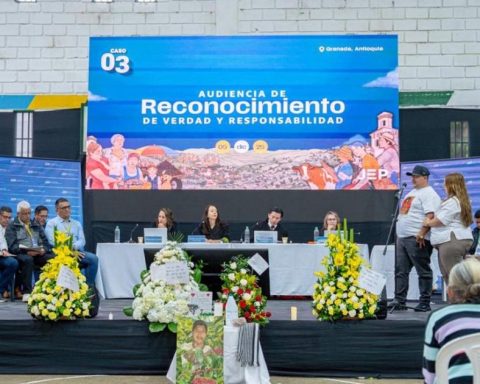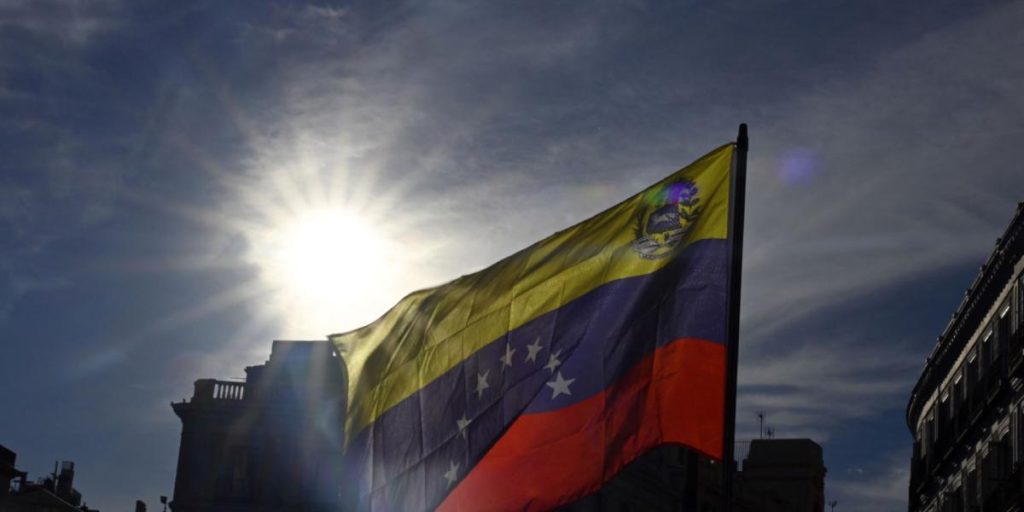The situation due to the peasant and mining strike seems to be getting more complicated, especially due to the increase in prices of some of the food products in the country. Although up to this point we cannot speak of a shortage, The impact will be reflected in inflation and in production losses.
(Read: After five days of mining and peasant strike, negotiation tables do not reach agreements)
In conversation with some of the most affected agricultural sectors in the country, it was estimated that at least six departments are blocked. Specifically, Colfecar assures that 16 active blockades remain where farmers and miners demand that the Government eliminate the resolutions that prohibit mining in the paramos areas, and also another that defines the agricultural frontier.
According to the latest figures, the National Federation of Poultry Farmers of Colombia (Fenavi), in five days of strike the main effects They focus on the risk of shortages for birds on farms, but there is also the difficulty of marketing the final products.
(See more: Farmers’ strike in Colombia: what places are they blocked?)
In detail, it is estimated that in Norte de Santander, a region that in most of the blockades turns out to be one of the most impacted, There are 130 farms affected, around 500 cargo trucks dammed and more than 1.5 million birds at risk.
“Regarding food for birds, in this region, 70% comes from Santander, but since it is not reaching the farms, other routes are used, which increases the risk of delays and shortages.”says the union.
(Read: After four days of the mining and peasant strike, how has the economy been affected?)
On the other hand, regarding production, Fenavi details that chicken production is affected, taking into account that the poultry farmers of Santander, They have not been able to enter the protein and the egg into the departments of Boyacá and Cundinamarca.
Mining strike
Private file
“In Boyacá there are more than 1.5 million birds that are affected by the difficulty in obtaining food. Chicken processing plants are also particularly impacted in this region.“, they point out.
(See more: National Guarantee Fund and Fedearroz sign agreement to increase access to credit)
It should be noted that Santander produces 25% of the chicken and 23% of the eggs distributed nationally. In addition, transportation costs arise due to the need to take alternative routes.
Regarding whether there is a food shortage, the president of the Colombian Farmers Society (SAC), Jorge Bedoya, told this medium that as long as the strike continues, We must wait for the figures from the supply centers to be able to determine if this situation would be occurring in Colombia due to road blockages.
However, he emphasized that an indicator It is the situation of the prices that are being presented in the places of the affected departments. According to Bedoya, so far there are increases of 60% in the prices of strawberries, onions and tomatoes.
(Read: After three days of the mining and peasant strike, the Government announces a dialogue table)
“Most blockages are sadly inflationary, they affect the entire sector, but the bottom line is always paid by consumers and our producers.“said the president of the SAC.

Food
Angie Rodríguez/EL TIEMPO
Increase in the price of fruits and vegetables
According to Álvaro Palacio, president of Asohofrucol, the problem of blockages in road corridors is generating a significant impact on the distribution of food, especially basic products in the family basket. “When food transportation is hindered, there is a reduction in the supply of products in market places, which increases their price due to shortages.”, he indicated.
(See more: ‘Colombia can be a great exporter of chicken to the world’: Cargill)
So, These types of increases tend to generate a chain effect that affects both producers, who may lose perishable products, and consumers, who face higher prices. In addition, the situation also impacts the local and national economy, since commercial activities in market places decrease, affecting small merchants.
An example of this is the situation that is being evident in the main supply centers. In the case of the Plaza Mayorista de Corabastos in Bucaramanga, The value of stuffing cucumber is the one that shows the greatest increase, Well, in the week of October 14 to 18, the kilo was at $2,444, but for the following week, October 21 to 23, it increased 34% to $3,276.
Likewise, increases have been reflected in that plant in foods such as pear guava (21%), common lemon (20%), Tahitian lemon (19%), national pear (17%), Batavia lettuce (16%) and passion fruit (16%).
(Read also: The World Bank redefines its approach to agribusiness)
Also, in Centroabastos de Bucaramanga there is a 26% increase in the price of tomatoes as a result of the decrease in harvesting work due to the peasant strike in the area. According to Jorge Bedoya, “This is a notorious fact that the governor of Córdoba and Boyacá are already talking about, expressing that it is already beginning to be felt and the food prices of various products are rising.”.
In addition, he expressed that in the transport strike that occurred in September There was a general increase in food prices in wholesale markets that in some cases were greater than 115% and the reduction in food supply in some cities was more than 23%.

Fruit
iStock
Another point of impact is in the Hass avocado sector. Based on the information provided, There are three packing plants in the Guatica area that report complications, because they must go through Marmato, which is a mining area.
(Read: Fall in palm oil production, a challenge for the agricultural sector)
Also, it is said that the Antioquia harvest has already stopped, and from today there is no way to move the fruit. At this moment there are three empty mules detained on the way to these packing stations that have not been able to arrive, a situation that has collapsed the plants. While the transport that manages to leave must go around the middle Magdalena, which generates delays and cost overruns.

Cargo transportation
Ministry of Transportation
Impacts on cargo transportation
According to data from Colfecar, the cargo transporters’ union, today five days of the peasant and mining strike have been completed, and 16 points of active blockades persist that are generating serious effects on the cargo, passenger and logistics transport sector in general. This has affected the transit of cargo vehicles that move more than 170 thousand tons of products such as: food, inputs for the agricultural industry. With these effects, they estimate losses for the sector of $326,000 million.
(See more: The Bogotá Metro was exalted at COP16 for its sustainability project)
“In addition to the losses due to loss of profits and maintenance of the drivers, transporters are being forced to take alternative routes with distances that imply greater trips between 20% to 30%, and when these cannot be taken, the vehicles They can only pass through the intermittent steps which are intermittent and scarce.“explains Nidia Hernández, president of the union.
Currently the blockades affect six departments and multiple supply and trade routes as follows:
North of Santander: 7 blockades that mainly affect the Cúcuta – Bucaramanga corridor, which is the main supply route for Norte de Santander in terms of food and basic finished products.
(See: With discounts, Uber Taxi is now available in the Coffee Region)
Santander: 3 blockades that are added to those of the Cúcuta – Bucaramanga route, but also affect: the Bogotá – Bucaramanga route, which makes it difficult to market agricultural products from Santander to Bogotá and the interior of the country.

Cargo transporters.
Juan Pablo Rueda
Antioch: 3 Blockages that mainly affect the Medellin – North Coast route both in the connection with the Department of Córdoba, and the exit through the Magdalena Medio, in this road corridor products such as: solid bulks such as corn and Plaice, milk, as well as export of avocado and citrus fruits, livestock, supply of raw materials for the industry of Antioquia and the Coffee Region.
(Read more: First section of the Valle Commuter Train would have co-financing from the State)
Caldas: The Marmato Blockade is one of the most complex since due to its location there are no alternative route options, therefore drivers are forced to endure long lines to be able to pass or take a detour of more than 200 km depending on the destination. Whether by La Línea or Letras, the affected products are: food, raw materials imported by Buenaventura, automobiles.
Boyacá:1 blockade that affects the connectivity between Bogotá and Boyacá since Monday, October 21, affecting the entire supply of finished products from Bogotá to Boyacá, as well as milk and other agricultural products to Bogotá.
(See also: Scania delivered 25 buses to the Rápido Ochoa transport company)
Cordova: 1 Blockade that affects all connectivity from Antioquia and the Coffee Axis, with the northern coast of the country affecting products such as: livestock, milk, corn, soybeans as well as foreign trade operations with Caribbean ports.
The blockades that began on October 21 have resulted in 108 hours of blockades that slow down the entire transportation operation, increase operating costs and leave drivers in situations “inhumane, sleeping in cabins, eating what they can and without access to basic services such as a bathroom”they mention.

Cargo transportation
Ministry of Transportation
The mining strike in Colombia has a series of direct and indirect effects on international trade and logistics in the country, particularly due to blockages on major transportation routes.
(Read also: Mintransporte advances strategies in the Micay Canyon area)
According to Miguel Ángel Espinosa, president of the Federation of Logistics Agents in International Trade (Fitac), It is important to emphasize that the implications of the strike range from the movement of goods to the cost and transportation times.
“Internal supply chains have been disrupted by blockades in key departments such as Antioquia, Santander and Norte de Santander, affecting the transit of goods, including inputs for export and import. This has a direct impact on the loading and unloading areas of merchandise in ports, airports, border crossings and free zones, generating delays in the supply chain and making it difficult to distribute national products to international markets.“he concluded.
(See: Air transport in Colombia anticipates special measures for the end of the year)

















